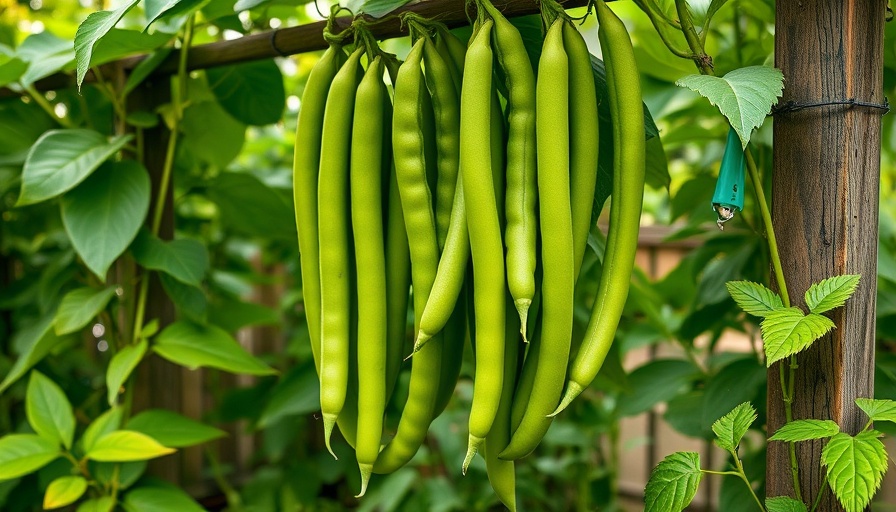
Mastering the Art of Growing Yard Long Beans
If you are looking to add unique flavors and an impressive visual element to your home garden, yard long beans are an excellent choice. Known as Vigna unguiculata subsp. sesquipedalis, these beans can produce stunning pods that reach up to 3 feet in length, making them a delightful addition to both your gardening repertoire and your culinary adventures.
Why Choose Yard Long Beans?
Also referred to as Chinese long beans, snake beans, or asparagus beans, yard long beans are celebrated in Asian cuisine for their delicious crunch and versatility in cooking. While they may seem uncommon in many American gardens, their cultivation is becoming increasingly popular due to their unique taste and the vibrant color they bring to meals. Plus, they are rich in vitamins A and C, iron, and fiber.
Essential Growing Tips for Healthy Plants
When planting yard long beans, timing is critical. They thrive in warm weather, so it's best to plant them in late spring after the last frost has passed. Select a spot in your garden that receives full sun, as these beans require at least 6-8 hours of sunlight daily. The soil should be well-draining with a pH of 5.5 to 7.5. To promote strong growth, adding a light layer of compost can enhance soil fertility without the risk of nitrogen overload, which can stifle flowering and pod development.
Growing Conditions and Care
Yard long beans are climbers and need support, such as trellises or fences, to reach their full potential. As they grow, ensure that they receive consistent watering—about 1 to 2 inches per week is ideal. This helps maintain their tender texture; too little water can lead to tough and shorter beans. Regular watering in the morning, particularly with drip irrigation or soaker hoses, reduces the risk of fungal diseases that can affect the plants.
Harvesting: Timing and Techniques
Getting the timing right for harvesting is vital for enjoying the best taste and texture of yard long beans. Aim to pick your beans when they reach 12-18 inches, ideally when they are about the diameter of a pencil. Mature pods can grow up to 3 feet, but they tend to lose tenderness and flavor as they ripen further.
Regular harvesting will encourage the plants to produce more beans. If you notice that the beans are becoming pale or too fibrous, it's best to collect them quickly to prevent halting the production of new growth.
Pest Management Made Easy
Like other garden plants, yard long beans can attract pests. Common foes include aphids, slugs, and caterpillars. Implementing integrated pest management strategies such as regular inspections, neem oil treatments, and introducing beneficial predators—like ladybugs—can help mitigate infestations. Maintaining healthy plants through good cultural practices is the cornerstone of an organic approach.
Cooking with Yard Long Beans
Once your beans are harvested, they can be enjoyed in many ways. A popular method is to quickly stir-fry them with garlic and a splash of soy sauce, emphasizing their natural crunch. Alternately, they can be added raw to salads or used in soups and stews to enhance flavors and textures. Versatility in the kitchen makes them delightfully appealing, especially for those seeking to explore different cuisines.
Get Started on Your Gardening Adventure
With their easy care and rewarding output, yard long beans are a great option for both beginner and seasoned gardeners alike. As you embark on this gardening project, remember that patience, regular maintenance, and a bit of creativity in the kitchen will yield a bountiful harvest worth celebrating!
Now that you know the ins and outs of planting and growing yard long beans, it’s time to get those seeds in the ground. Share your gardening journey with friends and family, and inspire them to cultivate their green thumbs!
 Add Row
Add Row  Add
Add 




Write A Comment